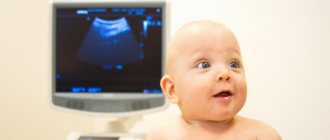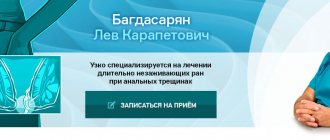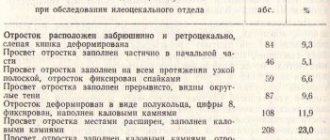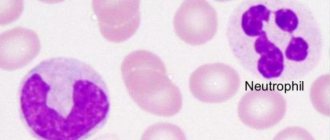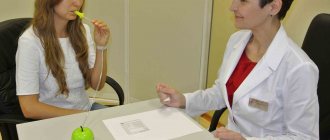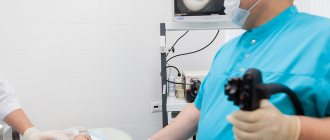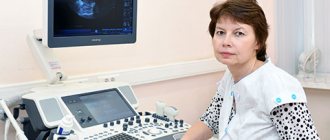Types of diagnostics
Research of the cardiovascular system:
Echocardiography
(heart examination) can be recorded on digital media.
- standard study
- examination for heart defects (congenital and acquired),
- study of regional systolic function of the heart in various pathologies: including HCM, DCM, RCM, pericarditis, cardiac masses, thromboembolism, etc.
Ultrasound angiography
- duplex scanning of the aorta and its branches,
- duplex scanning of head and neck vessels,
- duplex scanning of head and neck vessels with functional tests.
General visualization
- Neurosonography (NSG) - the study is carried out in the presence of an open fontanel
- Abdominal ultrasound
- Ultrasound of the kidneys and bladder
- Ultrasound of the pelvic organs
- Ultrasound of the scrotum
- Ultrasound of the adrenal glands and retroperitoneum
- Ultrasound of the thyroid gland
- Ultrasound of the thymus
- Ultrasound of lymph nodes
- Ultrasound of soft tissues
- Ultrasound of the hip joints
- Ultrasound of the eyes
Services
Water-siphon test for children - ultrasound diagnostics of the esophagus, stomach and duodenum, allowing to assess the shape of the stomach, its position, the thickness of the walls of the stomach in various parts, the presence or absence of deformations, peristalsis and the rate of fluid evacuation.
The water-siphon test allows you to determine signs of gastrointestinal diseases in children without resorting to gastroscopy of the abdominal organs.
Suitable for children from 0 years old.
Ultrasound of the stomach with water-siphon test allows you to identify
- cysts and pseudocysts
- ulcers
- polyps
- acute and chronic gastritis
- pyloric stenosis and pylorospasm (narrowing of the transition from the stomach to the duodenum) in infants
- gastroesophageal reflux disease
- diaphragmatic hernia
HOW IS THE WATER-SIPHON TEST PERFORMED?
While lying down, the child drinks liquid in a volume of 200 to 1000 ml. In the esophagus and stomach, fluid mixes with air. The ultrasound doctor sees how the fluid passes through the esophagus and into the stomach. The doctor evaluates the walls of the esophagus, can monitor how the sphincter between the stomach and esophagus works, and register refluxes (backflow of stomach contents into the esophagus). When filling the stomach with water, the thickness of the stomach walls and functional activity are assessed. The retention time of contents in the stomach and evacuation of contents from the stomach are studied. If there is reflux of contents into the esophagus, it is recorded at what volume of liquid drunk this occurs.
SYMPTOMS IN WHICH IT IS NECESSARY TO PERFORM AN ULTRASOUND OF THE STOMACH WITH A WATER-SIPHON TEST IN A CHILD AND CONTACT A PEDIATRIC GASTROENTEROLOGIST
- the child complains of pain in the upper abdomen, in the hypochondrium, which intensifies after eating, especially after fatty, fried, spicy foods
- bowel disorders, tendency to diarrhea
- constipation and colitis
- belching and heartburn after meals
- loss of appetite, malnutrition (underweight)
- feeling of a “lump in the throat”, acidity in the mouth
- excessive regurgitation in babies
INDICATIONS FOR WATER-SIPHON TEST FOR CHILDREN FROM 0 YEARS OLD
- painful symptoms mentioned above
- suspected hiatal hernia
- timely detection of ulcerative lesions and erosion of mucous membranes
- suspicion of the presence of polyps, establishing their location
- diagnosis of pyloric stenosis and pylorospasm in infants
- confirmation or exclusion of gastroesophageal reflux disease (GERD)
Duration – 20 min.
PREPARATION FOR STOMACH ULTRASOUND WITH WATER-SIPHON TEST FOR CHILDREN
Diagnosis is carried out strictly on an empty stomach, in the morning.
The last meal is at least 8 hours before the ultrasound. Exceptions are children under 1 year of age; if possible, the test should be carried out no earlier than 2 hours after eating.
On the day of the test, you cannot take medications, except for vital ones.
You need to bring liquid with you (water, tea, juice, compote). An exception for babies is breast milk or formula. Children under 1 year – 200 ml, over 1 year – from 200 ml to 1 l
Preparing for research
Ultrasound of the abdominal organs (stomach, gall bladder, liver, pancreas, spleen)
As planned
: the study is carried out on an empty stomach, do not give the child anything to drink; for newborns and children under 1 year of age before the next feeding. For three days, it is recommended to exclude from the diet foods that cause increased gas formation (dairy products, bread, fresh vegetables and fruits, legumes, sweet confectionery and carbonated drinks); Your doctor may also prescribe medications to help reduce gas formation.
Urgently
: no special preparation required.
Ultrasound of the stomach with water-siphon test
the study is carried out on an empty stomach, do not give the child anything to drink, bring a 0.5 liter bottle of water with you; Young children are allowed expressed milk, formula, compotes, juice, if this does not contradict the diet.
Ultrasound of the large intestine
the night before and in the morning of the test day, do a cleansing enema, give the child something to drink to fill the bladder
Ultrasound - determination of gallbladder function
The study is carried out using the drug "Hofitol", on an empty stomach or 6 hours after eating, do not give the child anything to drink.
Ultrasound of the bladder and kidneys
Give the child something to drink to fill the bladder (drink up to 0.5 liters of water an hour before the test). Do not overdose the child; the study is carried out with a physiologically full bladder.
Ultrasound of the pelvic organs (uterus and appendages) (transabdominal)
give the child something to drink to fill the bladder (the test is carried out with a well-filled bladder); if the child has a tendency to constipation, it is recommended to do a cleansing enema in the evening.
Ultrasound of the stomach with water-siphon test
Motility disorders of the upper gastrointestinal tract can cause not only gastroenterological diseases, but also be hidden under symptoms, for example, prolonged cough. Correct diagnosis of disorders allows a simple and painless method of ultrasound of the stomach with a water-siphon test. About this study - Oksana Rogovets, ultrasound diagnostics doctor at the Leninsky Clinic
Ultrasound of the stomach with a water-siphon test is a non-invasive research method that to some extent can replace gastroscopy. This extended version of abdominal ultrasound makes it possible to diagnose gastrointestinal diseases without introducing instruments into the patient’s body. This is a simple, gentle and completely painless test.
What can ultrasound with a water-siphon test reveal?
Indications for the study may include patient complaints of symptoms such as a “lump” in the throat, belching, heartburn or a feeling of “acid in the mouth,” heaviness, and abdominal pain. They may indicate impaired movement or motility of the upper gastrointestinal tract (GIT).
Ultrasound of the stomach with a water-siphon test can diagnose disorders of the motor function of the esophagus, stomach and duodenum. These disorders lead to the development of inflammation of the esophagus and stomach to erosive and ulcerative lesions. In infants, a common cause of regurgitation and poor weight gain are problems with the outlet section of the stomach (pyloric section) - pylorospasm, pyloric stenosis; ultrasound with a water-siphon test helps diagnose this pathology.
Assessing the passage of fluid through the duodenum and identifying the reflux of duodenal contents into the stomach allows us to establish a common cause of abdominal pain after eating, early satiety - “I ate two spoons and don’t want any more”, abdominal discomfort, and the formation of bacterial overgrowth syndrome in the stomach. intestines due to increased pressure in the duodenum (duodenal dyskinesia).
In addition, gastrointestinal motility disorders often become a hidden cause of diseases that, at first glance, are not related to the functioning of the gastrointestinal tract. For example, recurring sore throat, bad breath. In more than 50% of cases of prolonged cough, the true cause lies in disorders of the gastrointestinal tract. In an advanced state, this can lead to the development of bronchial asthma, bronchitis, chronic pharyngitis, and recurrent otitis media.
Therefore, a gastroenterologist regularly sees patients referred by other specialists: ENT doctors, pulmonologists, allergists.
How the research is carried out
Ultrasound of the stomach is performed in two stages: on an empty stomach and after it is full. No special preparation is required for the study.
In the supine position, the patient drinks water from a glass using a straw; infants drink from a feeding bottle. On the screen of the device, the doctor observes how the liquid passes through the esophagus and enters the stomach.
At this stage, you can evaluate the walls of the esophagus, suspect the presence of a hiatal hernia, monitor how the sphincter between the stomach and esophagus works, and register the backflow of stomach contents into the esophagus (refluxes).
When filling the stomach with water, the thickness of the stomach wall and functional activity are assessed. The retention time of contents in the stomach and evacuation of contents from the stomach are studied. If there is reflux of contents into the esophagus, the volume of liquid consumed is recorded. This helps determine one-time nutritional amounts.
The gastric ultrasound method with a water-siphon test is as simple as possible to perform and is safe for patients of any age from 0 to 99 years, and the information content of the study allows you to quickly find the problem and eliminate it.
At the Leninsky Clinic, ultrasound of the stomach with a water-siphon test is performed:
- Doctor of Medical Sciences, professor, doctor of the highest category Mikhail Ivanovich Pykov;
- ultrasound diagnostics doctor, doctor of the highest category Oksana Vladimirovna Rogovets;
- Ultrasound diagnostics doctor, gastroenterologist Natalya Vladislavovna Medvedeva.
You can make an appointment with specialists at the Clinic on Leninsky by calling:
.
Ultrasound diagnostics
Ultrasound of the stomach with a water-siphon test is a research method that to some extent can replace gastroscopy. This extended version of abdominal ultrasound makes it possible to diagnose gastrointestinal diseases without introducing instruments into the patient’s body. This is a simple, gentle and completely painless test.
What can ultrasound with a water-siphon test reveal?
Indications for the study may include patient complaints of symptoms such as a “lump” in the throat, belching, heartburn or a feeling of “acid in the mouth,” heaviness, and abdominal pain. They may indicate impaired movement or motility of the upper gastrointestinal tract (GIT).
Ultrasound of the stomach with a water-siphon test can diagnose disorders of the motor function of the esophagus, stomach and duodenum. These disorders lead to the development of inflammation of the esophagus and stomach to erosive and ulcerative lesions. In infants, a common cause of regurgitation and poor weight gain are problems with the outlet section of the stomach (pyloric section) - pylorospasm, pyloric stenosis; ultrasound with a water-siphon test helps to diagnose this pathology.
Assessing the passage of fluid through the duodenum and identifying the reflux of duodenal contents into the stomach allows us to establish a common cause of abdominal pain after eating, early satiety - “I ate two spoons and don’t want any more”, abdominal discomfort, and the formation of bacterial overgrowth syndrome in the stomach. intestines due to increased pressure in the duodenum (duodenal dyskinesia).
How the research is carried out
Ultrasound of the stomach is performed in two stages: on an empty stomach and after it is full. No special preparation is required for the study.
In the supine position, the patient drinks water from a glass using a straw; infants drink from a feeding bottle. On the screen of the device, the doctor observes how the liquid passes through the esophagus and enters the stomach.
At this stage, you can evaluate the walls of the esophagus, suspect the presence of a hiatal hernia, monitor how the sphincter between the stomach and esophagus works, and register the backflow of stomach contents into the esophagus (refluxes).
When filling the stomach with water, the thickness of the stomach wall and functional activity are assessed. The retention time of contents in the stomach and evacuation of contents from the stomach are studied. If there is reflux of contents into the esophagus, the volume of liquid consumed is recorded. This helps determine one-time nutritional amounts.
The gastric ultrasound method with a water-siphon test is as simple as possible to perform and is safe for patients of any age, and the information content of the study allows you to quickly find the problem and eliminate it.
Preparing a child for an ultrasound of the abdominal cavity: algorithm for infants up to 1 year
If the baby is undergoing an ultrasound of the abdominal cavity, preparation for the examination of the child involves temporary fasting. Exact recommendations depend on the age and nutritional characteristics of the small patient:
- Preparation for an abdominal ultrasound in breastfed children requires not eating for 3 hours before the procedure.
- Infants fed formula should fast for 3.5-4 hours before the examination, as formula takes longer to digest. It is better to avoid vegetable and fruit purees this time - they can cause flatulence.
In general, for an ultrasound to be as informative as possible, you need to undergo it immediately before the next feeding on your schedule.
